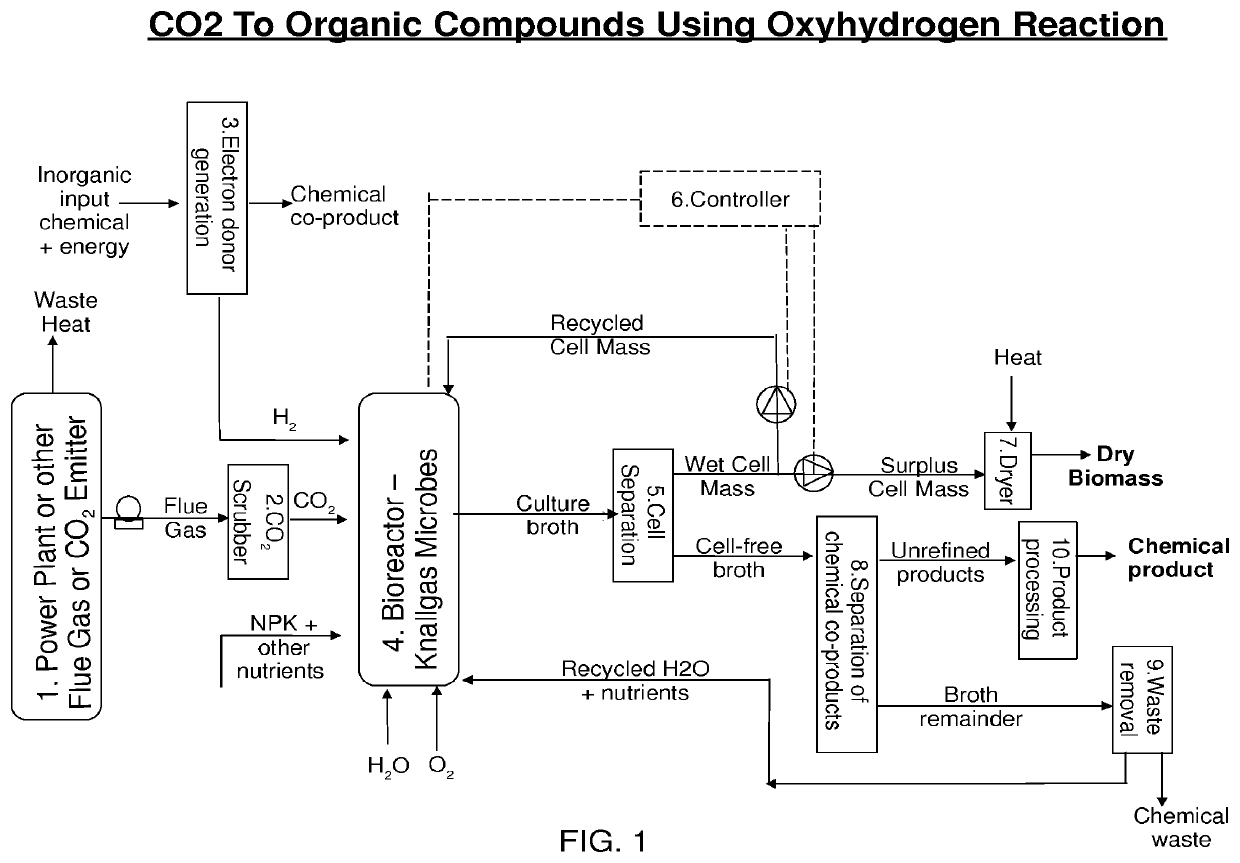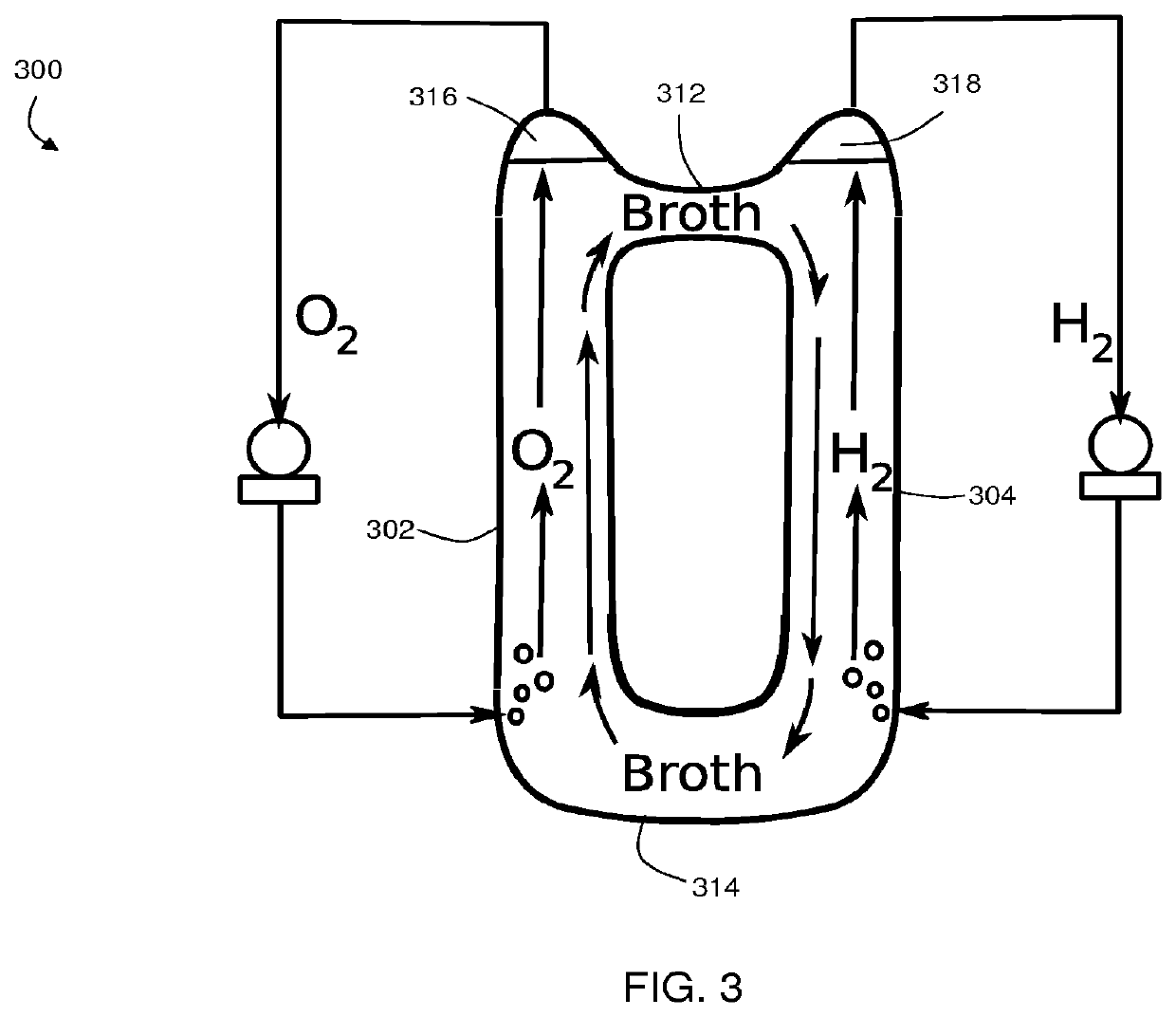Use of oxyhydrogen microorganisms for non-photosynthetic carbon capture and conversion of inorganic and/or C1 carbon sources into useful organic compounds
a technology of oxyhydrogen microorganisms and carbon capture, which is applied in the direction of waste based fuel, biomass after-treatment, energy input, etc., can solve the problems of limited effectiveness, economic feasibility, practicality and commercial adoption of the described processes, and achieve the effect of additional revenu
- Summary
- Abstract
- Description
- Claims
- Application Information
AI Technical Summary
Benefits of technology
Problems solved by technology
Method used
Image
Examples
example 1
[0138]In this example, oxyhydrogen microorganisms that accumulate high lipid content and / or other valuable compounds such as polyhydroxybutyrate (PIIB) to are grown on an inorganic medium with CO2 as the carbon source and hydrogen acting as the electron donor while oxygen provides the electron acceptor. Oxyhydrogen microbes such as these can be used in certain embodiments of the present invention in converting C1 chemicals such as carbon dioxide into longer chain organic chemicals.
[0139]Static anaerobic reaction vessels were inoculated with Cupriavidus necator DSM 531 (which can accumulate a high percentage of cell mass as PHB). The inoculum were taken from DSM medium no. 1 agar plates kept under aerobic conditions at 28 degrees Celsius. Each anaerobic reaction vessel had 10 ml of liquid medium DSM no. 81 with 80% H2, 10% CO2 and 10% O2 in the headspace. The cultures were incubated at 28 degrees Celsius. The Cupriavidus necator reached an optical density (OD) at 600 nm of 0.98 and a...
PUM
| Property | Measurement | Unit |
|---|---|---|
| diameter | aaaaa | aaaaa |
| microbial doubling time | aaaaa | aaaaa |
| concentration | aaaaa | aaaaa |
Abstract
Description
Claims
Application Information
 Login to View More
Login to View More - R&D
- Intellectual Property
- Life Sciences
- Materials
- Tech Scout
- Unparalleled Data Quality
- Higher Quality Content
- 60% Fewer Hallucinations
Browse by: Latest US Patents, China's latest patents, Technical Efficacy Thesaurus, Application Domain, Technology Topic, Popular Technical Reports.
© 2025 PatSnap. All rights reserved.Legal|Privacy policy|Modern Slavery Act Transparency Statement|Sitemap|About US| Contact US: help@patsnap.com



